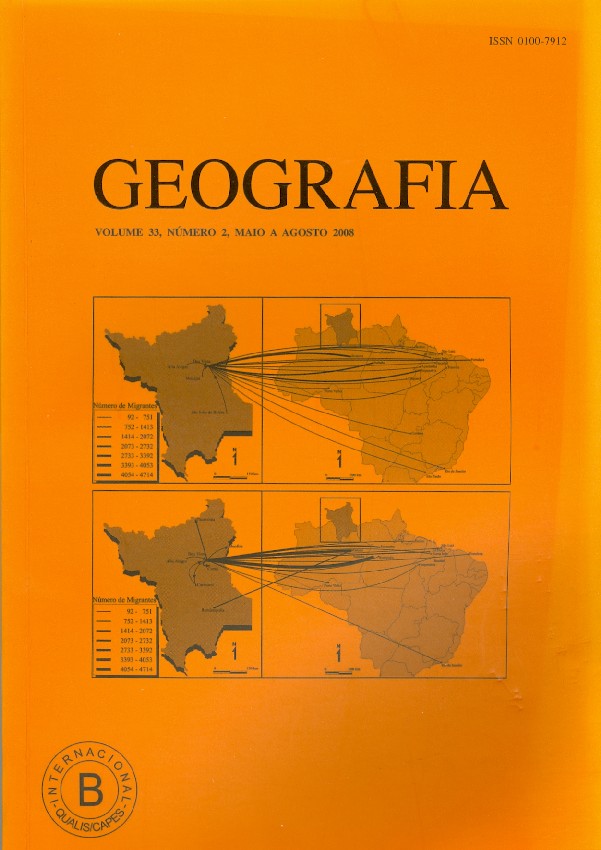Specral mixture analysis aplied for mapping the plume of the Amazonas River
Abstract
This paper aims to verify the applicability of Spectral Mixture Analysis (SMA) for mapping the plume of the Amazonas River, a feature of great importance for the coastal dynamics at the South-American Northeastern coast. Remote sensing reflectance data acquired by Sea-viewing Wide Field-of-view Sensor (SeaWiFS) were utilized to identify 5 water masses with different spectral and color characteristics. Through one SeaWiFS image were identified 5 water masses with different spectral and color characteristics, of what mean spectral signatures were obtained. The 5 types of water masses were classified according to its spectral characteristics, of what demonstrated typical behavior of waters with (i) suspended sediment, (ii) dissolved organic matter, (iii) oceanic water, and (iv and v) with different chlorophyll concentration. The mean spectral signatures were applied as endmembers in the SMA resulting in 5 fraction images. The fraction image related to the oceanic water allowed the best classification and mapping of the plume. The mapped area in the image shows the great extension (510 x 103 km2) that the plume can reach in the Northwestern direction from the Amazonas River mouth and into the Equatorial Atlantic, driven by the North Equatorial Counter Current and the North Brazil Current, respectively. Key words: Spectral mixture analysis. Amazon River plume. Remote sensing, SeaWiFS.Downloads
Issue
Section
License
The authors maintain the copyright and grant GEOGRAFIA the right of first publication, with the articles simultaneously licensed under the Creative Commons BY 4.0 License, which allows sharing and adapting the articles for any purpose, as long as appropriate credits and provisions of image rights, privacy or moral rights. Other legal attributions can be accessed at: https://creativecommons.org/licenses/by/4.0/legalcode.en.
Geography, Rio Claro, SP, Brazil - eISSN 1983-8700 is licensed under the Creative Commons BY 4.0 License.





